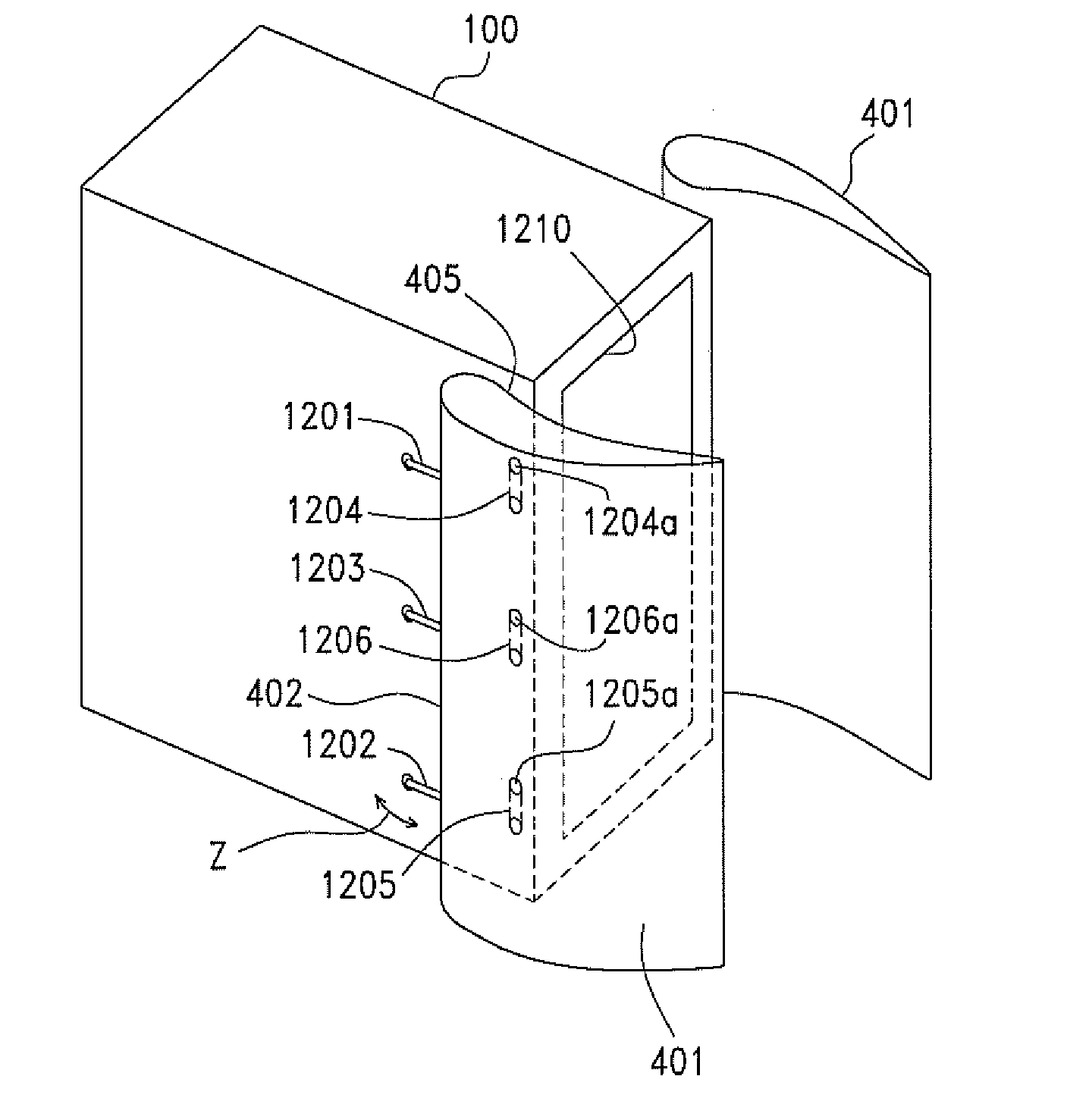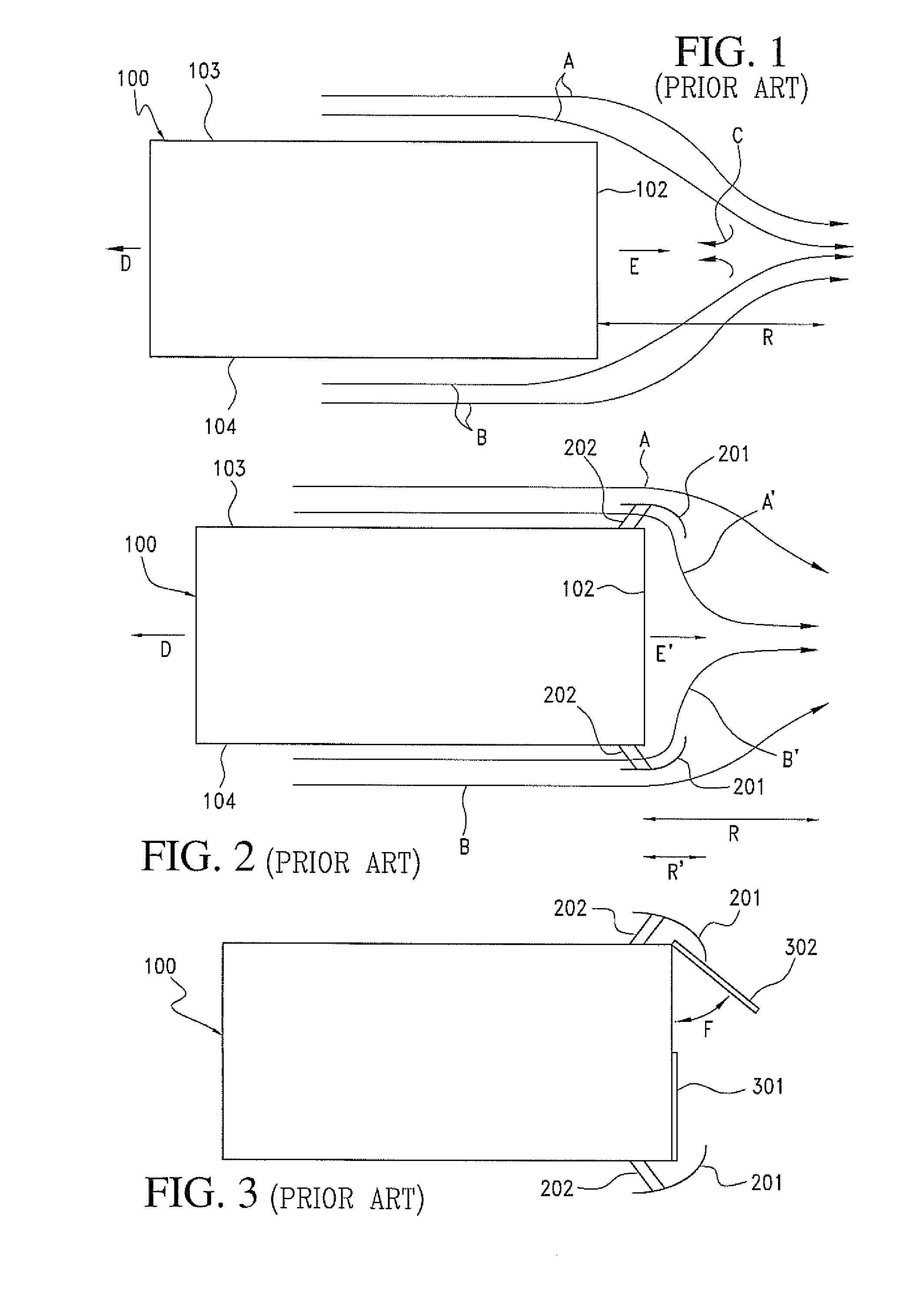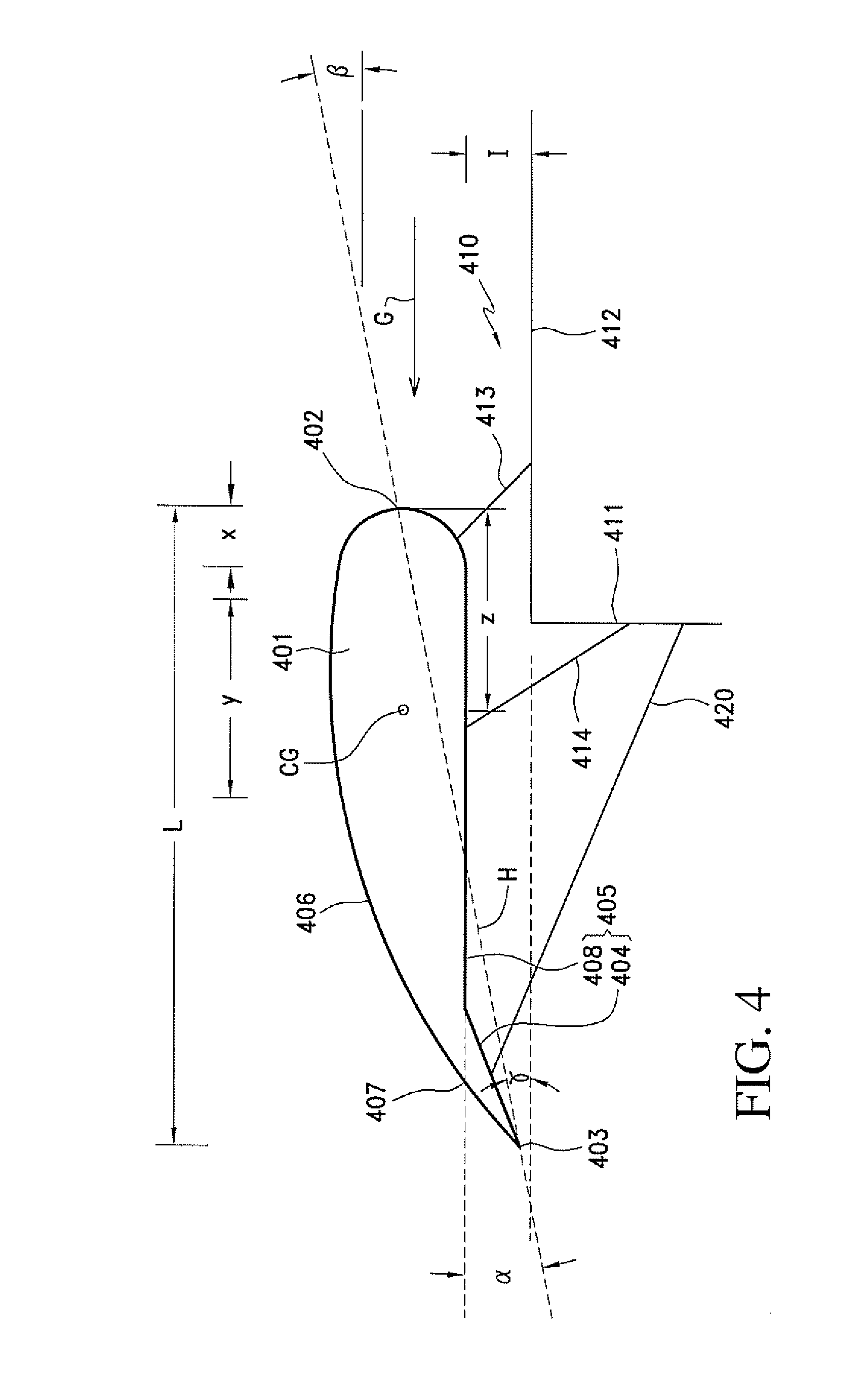Apparatus for reducing drag on vehicles with planar rear surfaces
a rear surface and apparatus technology, applied in the direction of roofs, vehicle arrangements, transportation and packaging, etc., can solve the problems of reducing fuel economy, requiring a sizable replacement cost, and devices with certain drawbacks, so as to reduce or prevent the formation of a volume of turbulent air
- Summary
- Abstract
- Description
- Claims
- Application Information
AI Technical Summary
Benefits of technology
Problems solved by technology
Method used
Image
Examples
Embodiment Construction
[0043]The term “aerodynamic center,” as used in this disclosure, may be defined as, but is not limited to, the point at which the pitching moment coefficient for a vane or airfoil does not vary with lift coefficient. For symmetric vanes or airfoils moving through an airflow, the aerodynamic center of the vane is located approximately 25% of the length of the chordline of the vane from the leading edge of the vane (the quarter-chord point). The chordline extends from the leading edge of the airfoil to the trailing edge of the vane or airfoil. For non-symmetric (cambered) vanes, the quarter-chord is only an approximation for the aerodynamic center.
[0044]The term “tractor,” as used in this disclosure, may be defined as, but is not limited to, a motor-driven vehicle used for pulling heavy machinery or other vehicles. In various embodiments, the term “tractor” relates to a truck tractor; i.e., a short truck with a driver's cab but no body, designed for hauling a trailer or semitrailer.
[0...
PUM
 Login to View More
Login to View More Abstract
Description
Claims
Application Information
 Login to View More
Login to View More - R&D
- Intellectual Property
- Life Sciences
- Materials
- Tech Scout
- Unparalleled Data Quality
- Higher Quality Content
- 60% Fewer Hallucinations
Browse by: Latest US Patents, China's latest patents, Technical Efficacy Thesaurus, Application Domain, Technology Topic, Popular Technical Reports.
© 2025 PatSnap. All rights reserved.Legal|Privacy policy|Modern Slavery Act Transparency Statement|Sitemap|About US| Contact US: help@patsnap.com



